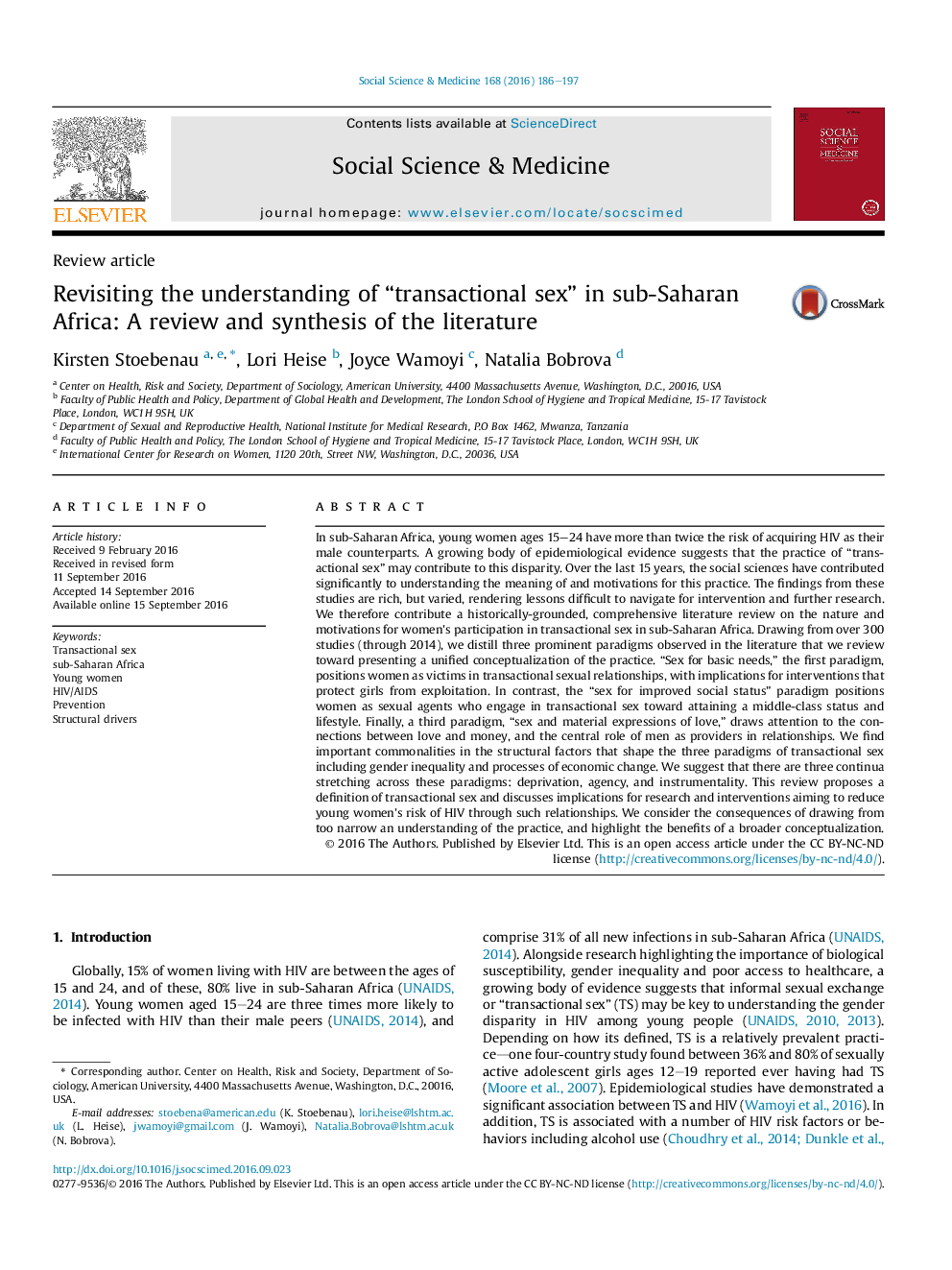| کد مقاله | کد نشریه | سال انتشار | مقاله انگلیسی | نسخه تمام متن |
|---|---|---|---|---|
| 5046919 | 1476001 | 2016 | 12 صفحه PDF | دانلود رایگان |

- Provides comprehensive review of literature on transactional sex in sub-Saharan Africa.
- Summarizes three main paradigms of transactional sex.
- Introduces conceptual framework to unify disparate paradigms.
- Discusses implications for definition of transactional sex.
- Considers implications for HIV interventions with young women.
In sub-Saharan Africa, young women ages 15-24 have more than twice the risk of acquiring HIV as their male counterparts. A growing body of epidemiological evidence suggests that the practice of “transactional sex” may contribute to this disparity. Over the last 15 years, the social sciences have contributed significantly to understanding the meaning of and motivations for this practice. The findings from these studies are rich, but varied, rendering lessons difficult to navigate for intervention and further research. We therefore contribute a historically-grounded, comprehensive literature review on the nature and motivations for women's participation in transactional sex in sub-Saharan Africa. Drawing from over 300 studies (through 2014), we distill three prominent paradigms observed in the literature that we review toward presenting a unified conceptualization of the practice. “Sex for basic needs,” the first paradigm, positions women as victims in transactional sexual relationships, with implications for interventions that protect girls from exploitation. In contrast, the “sex for improved social status” paradigm positions women as sexual agents who engage in transactional sex toward attaining a middle-class status and lifestyle. Finally, a third paradigm, “sex and material expressions of love,” draws attention to the connections between love and money, and the central role of men as providers in relationships. We find important commonalities in the structural factors that shape the three paradigms of transactional sex including gender inequality and processes of economic change. We suggest that there are three continua stretching across these paradigms: deprivation, agency, and instrumentality. This review proposes a definition of transactional sex and discusses implications for research and interventions aiming to reduce young women's risk of HIV through such relationships. We consider the consequences of drawing from too narrow an understanding of the practice, and highlight the benefits of a broader conceptualization.
Journal: Social Science & Medicine - Volume 168, November 2016, Pages 186-197